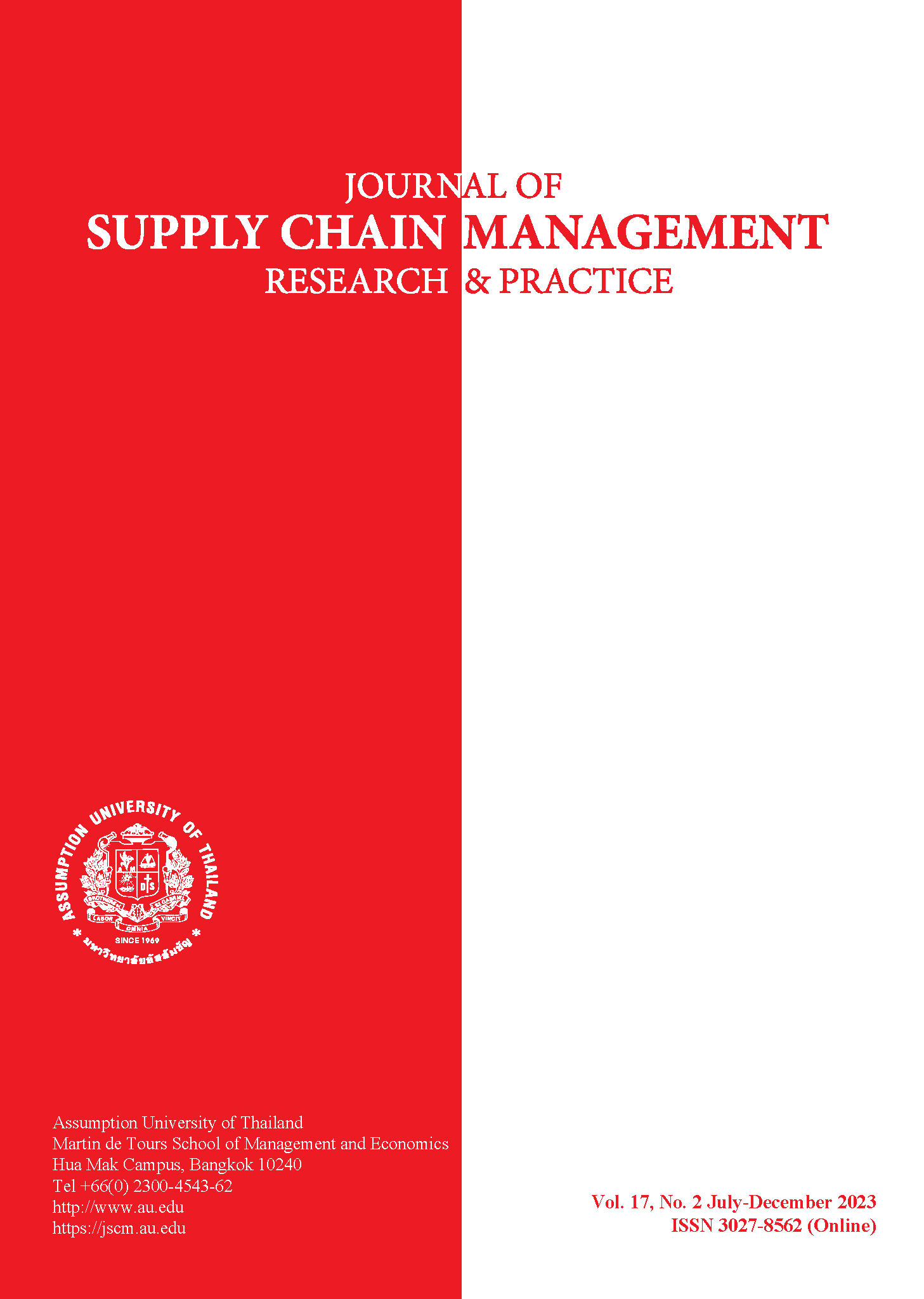SUPPLY CHAIN STRATEGY, STRUCTURE, AND OPERATIONAL PERFORMANCE: A STRUCTURAL EQUATION MODELING APPROACH
Abstract
The MSc thesis (of which this article is a highly condensed version) seeks to advance our understanding of the SSP (strategy, structure, performance) paradigm in the supply chain structure, but in a broader context by covering supplier relationships and customer relationships, technology and planning integration, and measurement system, in the context of Bowersox (1999 and 2002), by incorporating the impact of uncertainty. The impact of supply chain uncertainty on supply chain strategy and that supply chain structure fit is associated with a firm’s operational performance. It is an extension of existing research on the SSP paradigm. Empirical data was collected from the consumer packaged goods industry in Thailand.
This study provides considerable support for the literature from the previous studies of Stank, Defee (2005) and Rodrigues, Stank, and Lynch (2004). It proposes a conceptual framework, the proposition of hypotheses and illustrated models; which were derived from the models in these previous studies, together with the model of Lee (2002) related to the supply chain strategic response to supply chain uncertainties.
Three types of proposed models, Supply Chain Strategies (as measured by Supply Chain Uncertainties), Elements of Supply Chain Structure, and Firm’s Operational Performance, are demonstrated and explained.
First, the focus of the model was to examine the impact of supply chain uncertainty on supply chain strategies. The research result showed that the ‘fit’ strategy is not measured by supply chain uncertainties should be addressed. Second, the focus was to investigate the relationship between supply chain strategies and types of supply chain structures; and, the research result revealed a significant relationship between each of them. Finally, the focus was to investigate the ‘fit’ between supply chain strategy and types of supply chain structure which directly affect the firm’s operational performance; but the research result showed a significant relationship only with the structural element of technology and planning integration, although with marginal effects.


